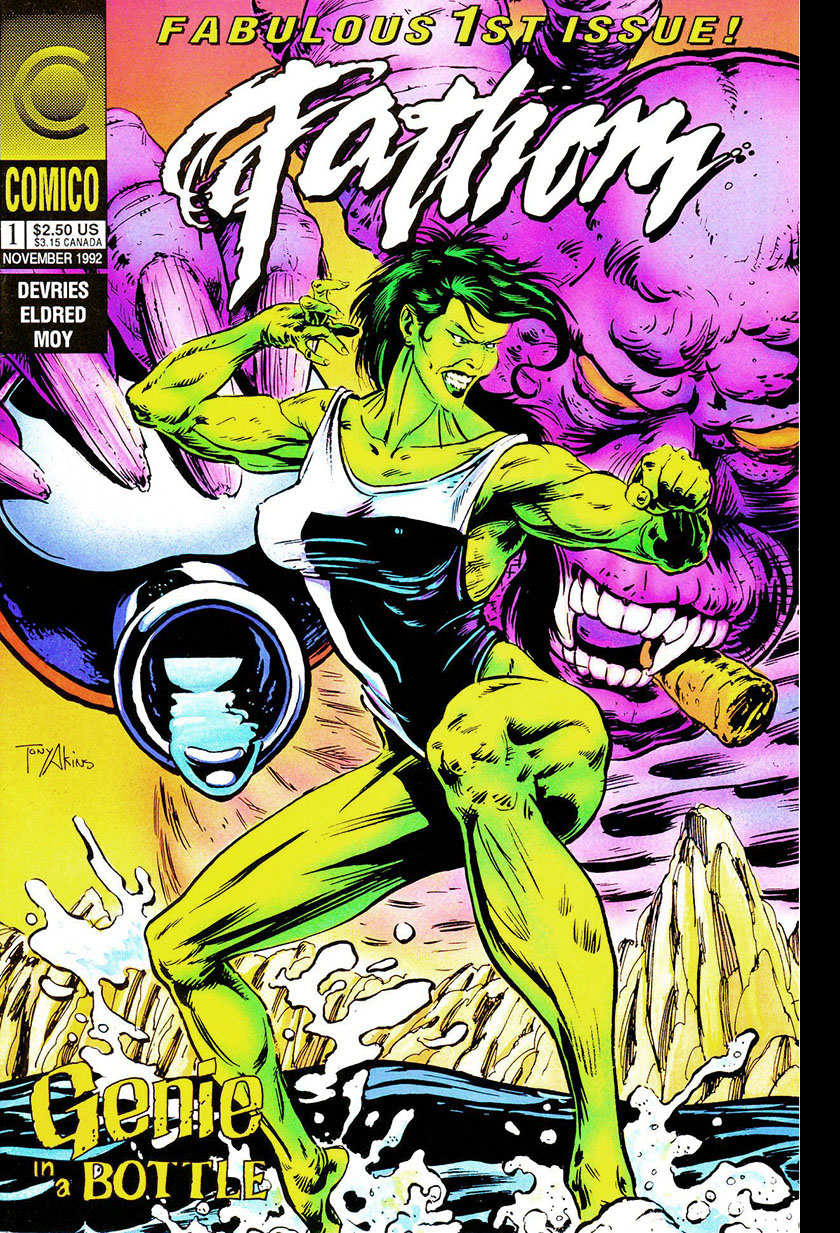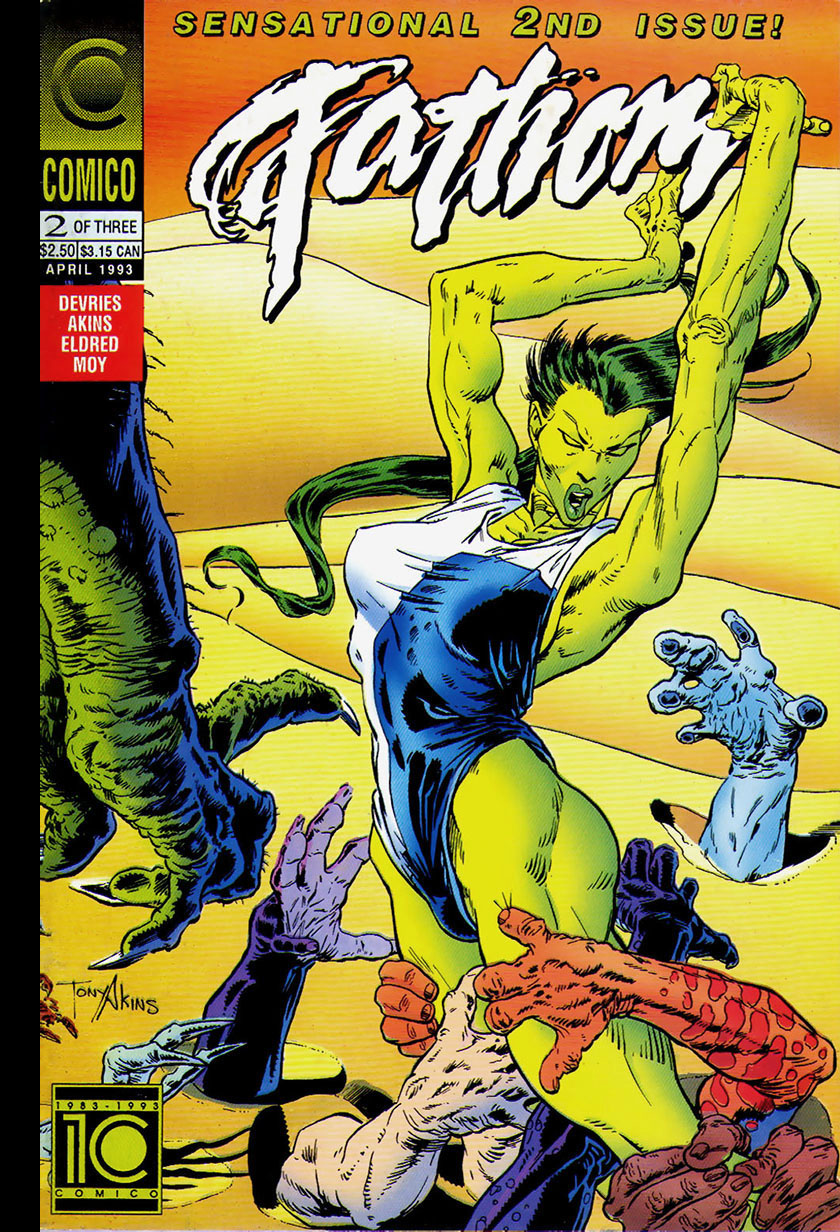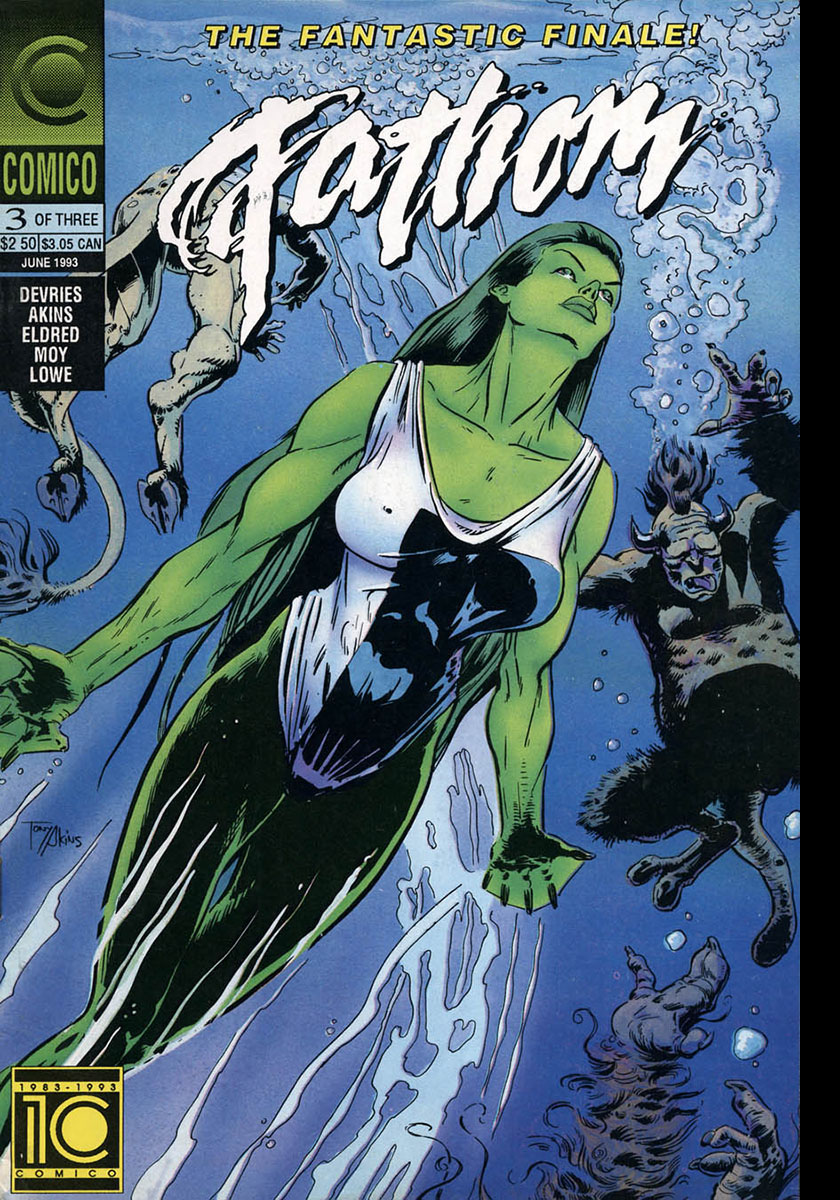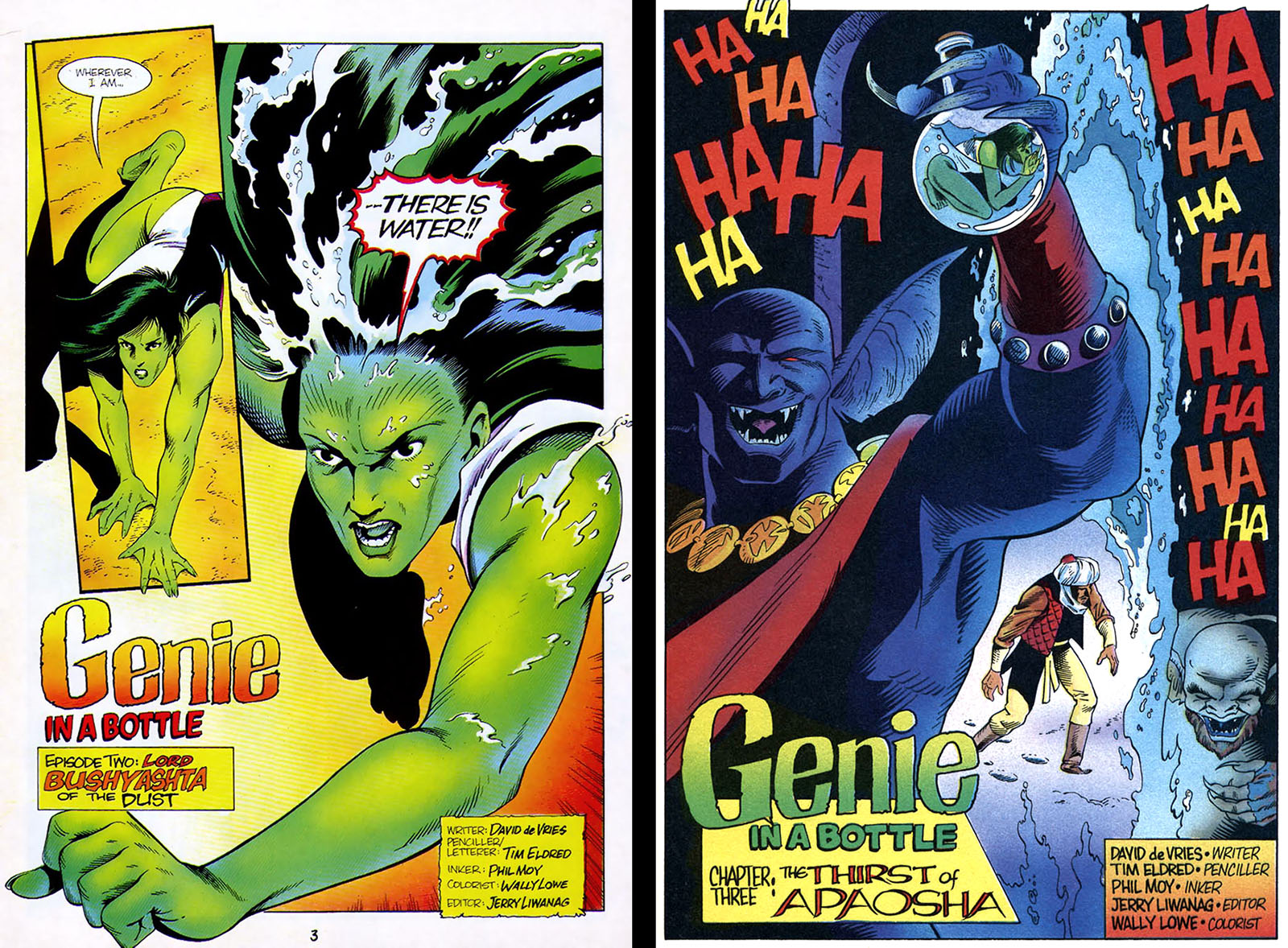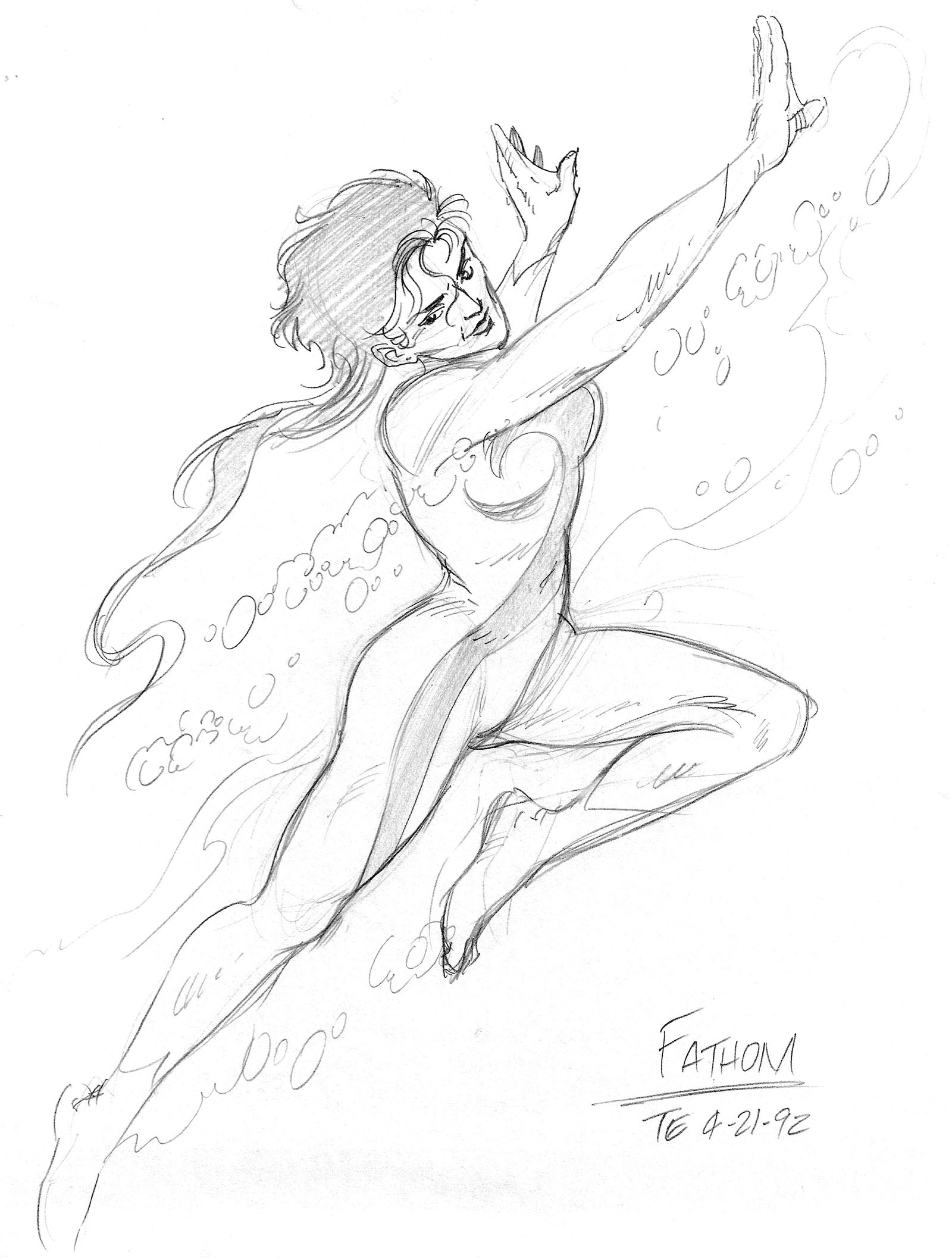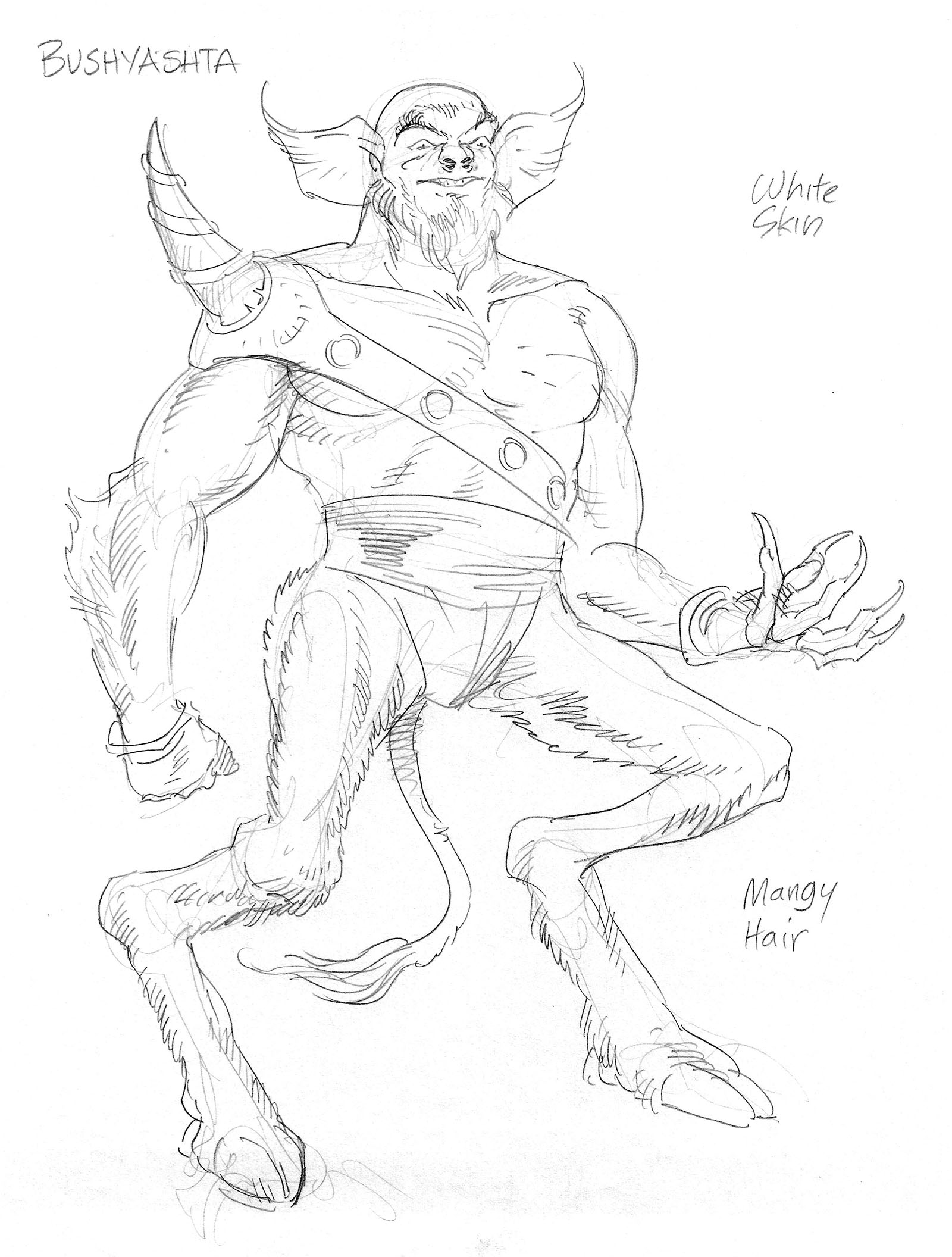Fathom: Genie in a Bottle, 1992-93
Whether I loved them or hated them, every project I ever worked on taught me something valuable. This one had lessons aplenty, some of which haunt me to this day.
In the spring of 1992, I was in a tough spot. As written elsewhere, I needed two steady comic book projects a month to keep my bills paid. I’d proven to everyone in sight that I could handle this workload with ease. My production schedule was rigidly structured to guarantee (barring unforeseen disaster) that I’d always have enough time for two. Based on what I’d heard through the grapevine, this made me a very unusual hombre; a large percentage of artists were known to flame out for lack of planning.
Throughout 1992, I had one steady project in the form of Robotech Invid War from Eternity. But that second slot was shaky. I was set to finish the last issue of Cybersuit Arkadyne in April, and would need something to take its place. I had developed another original idea called Grease Monkey, but there were no takers yet.
I was also really hoping to find work with a new publisher. My experience with Eternity had already proven that it was a bad idea to be reliant on just one source. As fate would have it, there was another company not far from my neck of the woods: Comico.
Based in Chicago, they were founded in 1982 and caught my eye as the first publisher to land both Robotech (1984) and Star Blazers (1987). Their best-known title was a superhero series created by writer/artist Bill Willingham called The Elementals. The company went through a lot of evolution and turbulence until it spiraled into bankruptcy and was acquired by a new owner in 1990.
One of the ideas I’d hatched around this time was to approach Comico about reviving Star Blazers, which would have been a dream gig. I didn’t know if they still had the license, but I sent them a proposal anyway and that got some dialogue going. This didn’t lead to me working on Star Blazers for Comico (that would happen three years later with a totally different company), but I did get another assignment instead: a three issue Elementals spinoff featuring the water-based superhero Fathom.
It sounds effortless when I state it that way, but it was a bit more harrowing than this, entirely because of who I had to work with: the new owner who took over the company in 1990.
“Notorious” is the most polite descriptor I can come up with. Others have been offered in print. Deceitful. Hustler. Nightmare. Enigma. Bewildering. Crook. And, based on my own experience, fast talker. The guy could talk your ear off. Conversations would go on and on and ON with nothing accomplished or decided. I’m not sure what his goal was. Some people are talkative because they love to hear themselves talk. Others are talkative because they want to lure you into a false sense of security. One thing’s for sure, it gave me a lifelong suspicion of fast talkers. I can never shake the suspicion that they’re trying to cover for something.
But above and beyond this was the simple problem of getting paid on time. I have always lived up to my side of a deal. As a freelancer, I deliver art on or ahead of schedule, along with an invoice. It keeps me employable. And I expect the same courtesy in return. Not endless excuses about why funds aren’t available, or digressive stories about how somebody else screwed you over, or just plain silence that goes on for months. That’s what happened here, and it seemed to be a very typical Comico experience.
Everything was rah-rah-happy-time before we got into the money problems, though. After my 4-page tryout landed me the project in April/May, I took a day trip to Chicago where I met with the owner. Also in town were the writer of the Fathom comic, and a friend of his who was shaping up to be the inker. The writer was an amiable Australian named David de Vries and his friend had the initials J.S. I wish I could remember his full name, because we hit it off well. He did a great job with my tryout pages, but the series ended up with a different inker for reasons I never learned. That inker was Phil Moy, who was destined to become the very first person I blocked on Facebook. Sometimes it’s just best to keep the conversation professional.
Anyway, David’s scripts were great and put a new challenge in front of me: to draw a story taking place 1,000 years ago in the Middle East with demons and dark magic. It was already a big deal for me to be drawing a superhero comic, now I had to do historical research on top of it. But this got done and I was delighted to see what came out of my pencil. I can’t say it wasn’t a struggle (every new project has its challenges) but I was in a position to recognize that my technique – especially my figure drawing – had taken another leap forward thanks to the mileage I’d put in on Eternity titles. A lot of bad habits had faded away, and I felt liberated.
This was an important step toward being able to market myself to other publishers who got all cross-eyed about “manga style” and needed me to prove that I could draw real people.
While making my way through the three issues of Fathom (in tandem with Robotech Invid War), conversations with the owner continued. At this point, it seemed like Comico could become the second publisher I’d been looking for. Everybody was happy with my work and impressed by my productivity. And if there’s one thing a comic book publisher needs to thrive, it’s an artist who turns their work in on time.
But this was all a fantasy. In hindsight, I’m sure the owner just saw me as another useful idiot, one of those comic book guys who were so geeked to draw comics that you could string them along and sweet talk your way out of paying them on time. Even if they eventually gave up, you’d have the pages you needed and you could publish them at your convenience.
His favorite grift (which he bragged about in another endless monologue) was to stretch the distributor’s rules as far as he possibly could. Instead of shipping printed comics when they were expected, he’d get imaginary comics listed in the monthly catalogs and only put them into production after enough orders came in to make them profitable. Normally, they’d already be print-ready when you got your order numbers. Instead, this was when he’d have the artists begin drawing them. That way, when they came out late, he could simply blame the artist if he wanted to. I don’t know how often he got away with this, but he wasn’t particularly concerned about his reputation as long as the cash kept flowing.
I enjoyed drawing these three issues, got them done in the space of three months, and then…nothing. Occasional checks in the mail, but not as quick as I needed them. I pushed and pushed to get more projects going, but I’d served my purpose and communication stopped. Fortunately, I miraculously got a publisher for Grease Monkey just in time to make it my next project (read more about that here). I had offered it to Comico. The owner changed the subject. I count myself lucky on that score.
The first issue of Fathom, Genie in a Bottle was published in November ’92, then a full five months went by before the second issue appeared. The third appeared two months after that, in June ’93. I was finally paid in full sometime thereafter (more than a year late), at which point I thanked GOD that I never had to deal with the owner of Comico again.
The company shut down some time in 1997, probably when all the bad blood finally caught up to him. To a person, everyone else I met who worked for him walked away with a story like mine. The lesson is this: when you make manipulation your M.O., it’s inevitable that one day you will find all your bridges burned. I have to imagine that’s what finally brought down this troubled company.
The owner vanished from sight after that, to pop up again over twenty years later with a new company name and the same old playbook. And nary a bridge in sight.
Issue 1
Production period: May 1992
Published November 1992
Issue 2
Production period: June 1992
Published April 1993
Issue 3
Production period: July 1992
Published June 1993
Production archive
Tryout drawing (penciled)
Inked version
Character designs
Cover concepts for all three issues (unused)
My contribution to an Elementals “lingerie special.” Just to twerk the homophobes.

